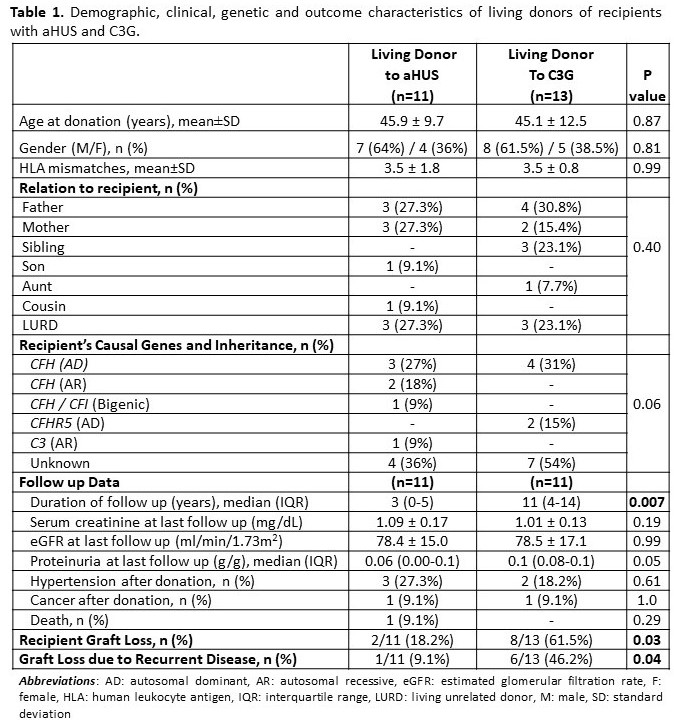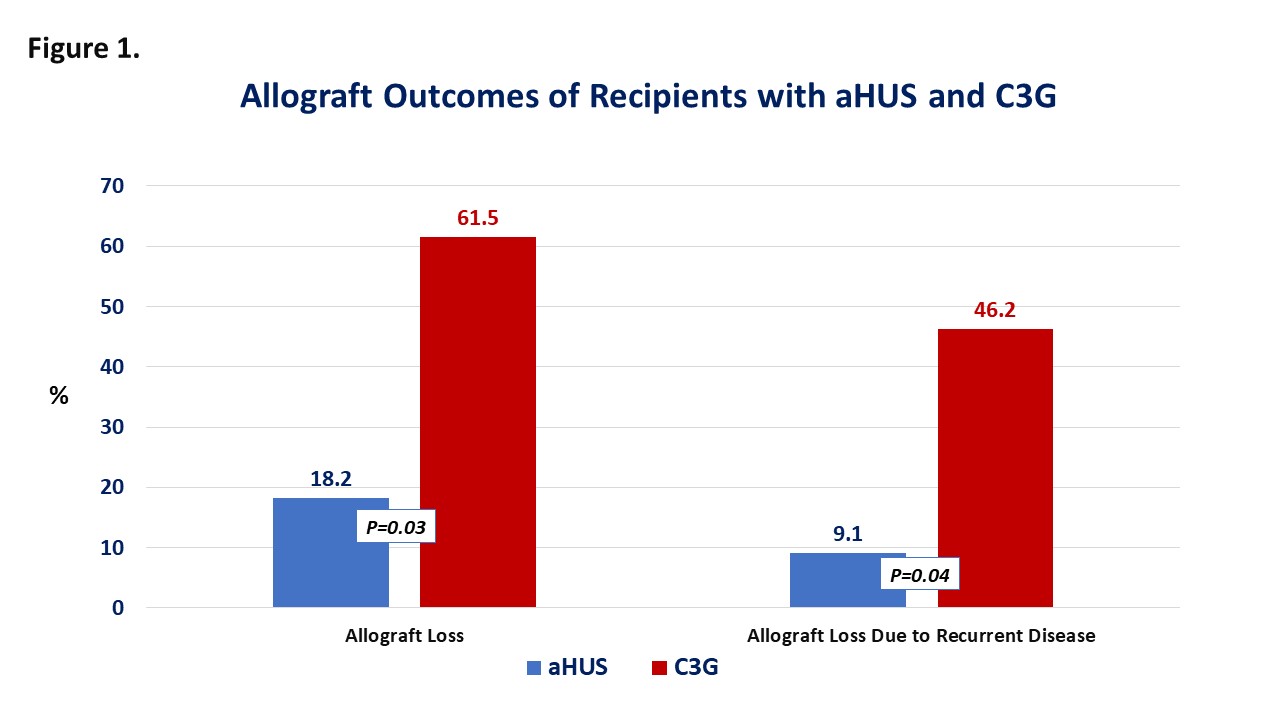Living Related Kidney Donation for Alternative Complement Pathway Diseases: Long-Term Outcomes
1Saint Louis University, Saint Louis, MO, 2Istanbul University, Istanbul, Turkey, 3Marmara University, Istanbul, Turkey, 4Koc University Hospital, Istanbul, Turkey, 5Uludag University, Bursa, Turkey
Meeting: 2022 American Transplant Congress
Abstract number: 806
Keywords: Kidney transplantation, Living donor, Outcome, Recurrence
Topic: Clinical Science » Kidney » 39 - Kidney Living Donor: Long Term Outcomes
Session Information
Session Name: Kidney Living Donor: Long Term Outcomes
Session Type: Poster Abstract
Date: Saturday, June 4, 2022
Session Time: 5:30pm-7:00pm
 Presentation Time: 5:30pm-7:00pm
Presentation Time: 5:30pm-7:00pm
Location: Hynes Halls C & D
*Purpose: Atypical hemolytic-uremic syndrome (aHUS) and C3 glomerulopathy (C3G) are rare conditions that cause severe kidney disease. Data to guide the evaluation of living related donor (LRD) candidates for aHUS and C3G are very limited. We examined the clinical course of LRDs to recipients with aHUS and C3G to understand the challenges and outcomes after donation.
*Methods: The cohort of recipients and their living donors (LD) was retrospectively identified from data at 5 transplant centers (1987-2021). LD were followed for postdonation kidney function measured by eGFR, proteinuria, cardiac events and death. Recipient graft outcomes were also examined.
*Results: The cohort comprised 24 LD to recipients with aHUS (46%) and C3G (54%) including 18 LRD, where relationship to recipient included father (7, 29%), mother (5, 21%), sibling (3, 12.5%), son (1, 4%), aunt (1, 4%) and unrelated (6, 25%). Outcomes were evaluated in 22 LRD over 5 years (IQR, 2.5-11) follow-up. None of the donors developed kidney failure (eGFR<15 ml/min/1.73m2 or dialysis). Last follow up serum mean (SD) creatinine, eGFR and proteinuria levels were 1.05 (0.16) mg/dL, 78.4 (15.7) ml/min/1.73m2, and 0.13 (0.22) g/g, respectively (Table 1). During follow up, 5 (23%) donors developed hypertension, but none developed cardiac events. One donor developed gastric cancer and another donor developed a brain tumor and died at 4th year after donation. Regarding recipients, 2 (18.2%) of aHUS and 8 (61.5%) of C3G recipients lost allografts at a median 11 (IQR 6-14.5) years after transplant (p=0.03).
*Conclusions: The risks of kidney failure, cardiovascular disease and de novo aHUS and C3G in carefully selected LRD to recipients with aHUS and C3G appear to be low. However, recipients fact a high risk of allograft loss due to recurrent disease, particularly those with C3G, warranting careful counseling of expected outcomes when considering LD transplantation in this population.
To cite this abstract in AMA style:
Caliskan Y, Safak S, Dirim AB, Velioglu A, Yelken B, Oto OA, Yildiz A, Garayeva N, Yazici H, Ersoy A, Turkmen A, Lentine KL. Living Related Kidney Donation for Alternative Complement Pathway Diseases: Long-Term Outcomes [abstract]. Am J Transplant. 2022; 22 (suppl 3). https://atcmeetingabstracts.com/abstract/living-related-kidney-donation-for-alternative-complement-pathway-diseases-long-term-outcomes/. Accessed November 5, 2025.« Back to 2022 American Transplant Congress


